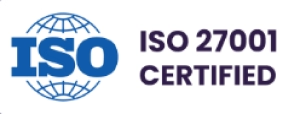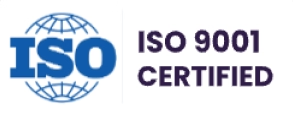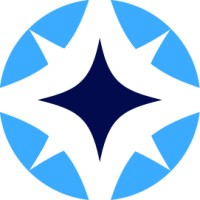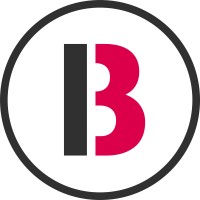Scalable 24/7 Technical Support Outsourcing
Streamlining Tech Support Outsourcing Services for Enhanced Customer Interactions
IntelligentBee Delivers Customer-Centric, Tech-Driven Outsourced Tech Support Solutions

Unmatched Technical Customer Support, Simplified!
24/7 Tech Support Availability
Never overlook a support request again with our around-the-clock technical customer support. Your customers' issues are our priority, any time zone.
Multi-Channel Communication
Connect with your clients through their preferred communication channels. Be it email, phone, live chat, or social media, our seamless multilingual support is there.
Varied Technical Expertise
From frontline to technical expert agents, our team handles support tickets across all technical levels, ensuring comprehensive customer success.
Fully Managed Teams
Focus on your main product or service while our team manages customer interactions without needing your supervision.
Dynamic Scalability
Our tech support services for saas businesses can adjust staff numbers to match your changing needs.
Worldwide Language Support
Our tech support team speaks multiple languages to help all customers feel understood and appreciated.
Expert Customer Service Agents
Elevate your customer experience with our trained Customer Service Representatives who manage each interaction with the utmost quality, ensuring effective support strategies.
Guaranteed Data Protection
Your clients' information is safe under our watch. We focus on data security, fostering trust in every interaction. That makes us one of the best among technical support outsourcing companies.
Insightful Performance Metrics
Gain insights into your customer support SaaS with our detailed reports. This enables continuous improvement in response times and customer satisfaction.
IntelligentBee: More Than Just Outsourced Tech Support
Meet IntelligentBee, your partner in success. Our passion for quality and our 4H values define our approach to outsource 24/7 tech support.
We boost your growth with exceptional SaaS customer support, leveraging our deep technical expertise. With us, you're free to focus on expansion while we excel in customer interactions and solving complex technical issues.
Choosing us means selecting a committed and dependable partner. We focus on your long-term success and employ customer-centric strategies that extend beyond the first project.

Benefits of Our Tech Support Outsourcing
Elevating Customer Joy
Delight your clients with our 24/7 outsourced tech support. Promptly addressing support requests, we raise the bar for customer happiness.
Expanding Your Global Footprint
Our outsourced customer support services make global expansion effortless. Multilingual capabilities enable connections with diverse markets, broadening your influence.
Scalable Support Solutions
Adapt swiftly with our flexible tech support outsourcing. We tailor your team size to your current demands, no strings attached.
Direct Access to Expertise
Immerse yourself in our wealth of knowledge. Our technical customer support provides a knowledgeable team without the need for extensive training.
Prioritize Your Core Business
Sharpen your focus on what truly matters. Our outsourced tech support takes over customer service, letting you zero in on your main business.
Unmatched Cost Savings
Outsource tech support and save. Reduce costs for hiring, training, and operational costs and obtain more economical results than an in-house team.
Let's Talk Tech Support Excellence!
Get startedOvercoming Technical Hurdles
IntelligentBee adeptly navigates your technical and customer support challenges, ensuring smooth operations and customer satisfaction.
Rapid, Reliable Service
Is your technical support quick and proficient? Our 24/7 availability and skilled Customer Support Representatives guarantee fast and effective resolution of support tickets.
Overcoming Communication Barriers
Struggling with language or accessibility issues? Our comprehensive tech support dedicated teams actively hears and values the voice of every customer.
Eliminate Customer Wait Times
Our scalable solutions prevent customer delays, even during peak times. Flex your support team based on real-time demand, ensuring efficient service.
Ensuring Customer Data Privacy
Data security is paramount. Our rigorous measures protect customer information, providing peace of mind for you and your clients.
5 Steps to Exceptional SaaS Customer Support
Initial Planning Session
In just a couple of days, we clarify agent roles, schedules, and objectives, setting a solid foundation for success.
Assembling Your Ideal Team
Over a few weeks, we select the best fit for your needs from our talent pool, ensuring they match your cultural and technical requirements.
Preparing Your Tech Infrastructure
Quickly, in 1-2 days, we set up all necessary tech, ensuring your team is ready to hit the ground running.
Comprehensive Training Process
Intensive 1-2 day training sessions prepare your team to address customer issues effectively, backed by our vast experience.
Going Live with Confidence
Within a month, your newly formed, highly skilled support team is ready to deliver outstanding service to your customers.
Following launch, we provide ongoing, detailed activity reports, ensuring transparency and continuous improvement throughout our service.

Flexible Pricing, Tailored Solutions
Choose from our variety of plans, designed for businesses of all sizes and needs.
* 1 Interaction = One email, call or one full conversation in a live chat.
Frequently Asked Questions
What is outsourcing technical support and why outsource technical support?
Outsourcing technical support involves hiring external specialists to manage your tech support needs. It allows businesses to access expert assistance, reduce operational costs, and focus on core activities. This approach enhances customer service quality while optimizing resources.
Click here to read more about what is outsourcing technical support and latest trends.
What is the experience of your company in outsourced customer support?
Our company has been in the customer support outsourcing industry for over a decade. We've worked with various industries ranging from tech startups to established businesses, providing them with top-notch customer support.
Can you handle high-volume customer inquiries?
Absolutely, we are equipped with state-of-the-art technology and a well-trained team that can efficiently handle high volumes of customer inquiries.
How quickly can your team respond to customer inquiries?
Our average response time is within an hour. However, we can customize our services based on your specific needs and expectations.
Can you handle multi-channel support (email, phone, chat, social media)?
Yes, we can handle multi-channel support. We understand the importance of being present on all platforms where your customers are, so we offer support via email, phone, chat, and social media.
How do you handle sensitive customer data?
We take data security very seriously. We comply with all relevant data protection regulations and employ robust security measures to protect customer data.
Why is customer support vital for a SaaS company?
Customer support is crucial for SaaS companies as it directly impacts user satisfaction, retention, and brand reputation. Effective support resolves issues quickly, improves product understanding, and strengthens customer relationships, leading to increased loyalty and positive word-of-mouth, essential for growth and success in competitive markets.
Read more about What Is SaaS Customer Support: Beyond Basics
How do you ensure the quality of customer support?
We conduct regular training and quality assurance checks to ensure that our team is always providing the best customer service. We also monitor and evaluate our team's performance regularly.
How do you measure customer satisfaction?
We measure customer satisfaction through various metrics such as CSAT (Customer Satisfaction Score) or NPS (Net Promoter Score). We also collect customer feedback to continuously improve our services.
Do you provide 24/7 support?
Yes, we do provide 24/7 support to ensure that your customers' queries are answered at any time of the day.
What languages does your team support?
Our team supports multiple languages including English, Spanish, French, Italian and German. If you need support in a language that is not in our current list, we can discuss options to accommodate your needs.
Can you provide references or case studies from similar companies that you have worked with?
Certainly, we can provide several case studies and references from similar companies we've worked with. We believe in transparency and are proud of the work we've done with our clients.













